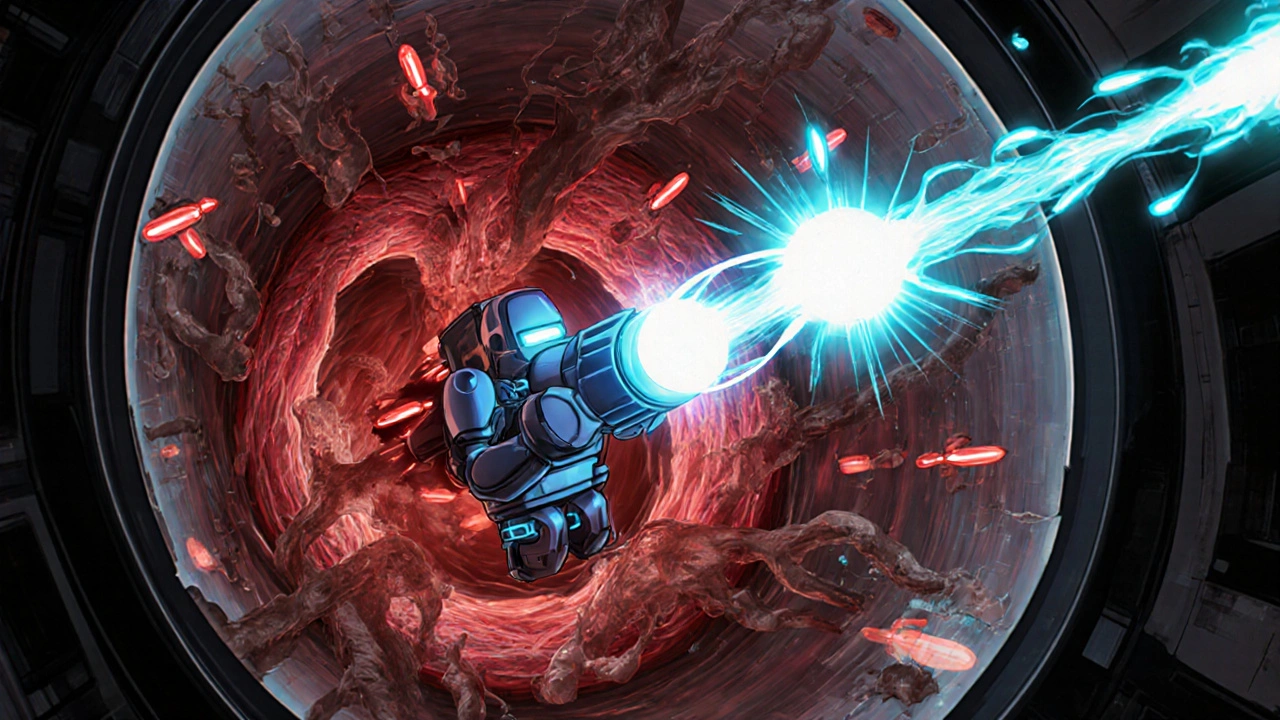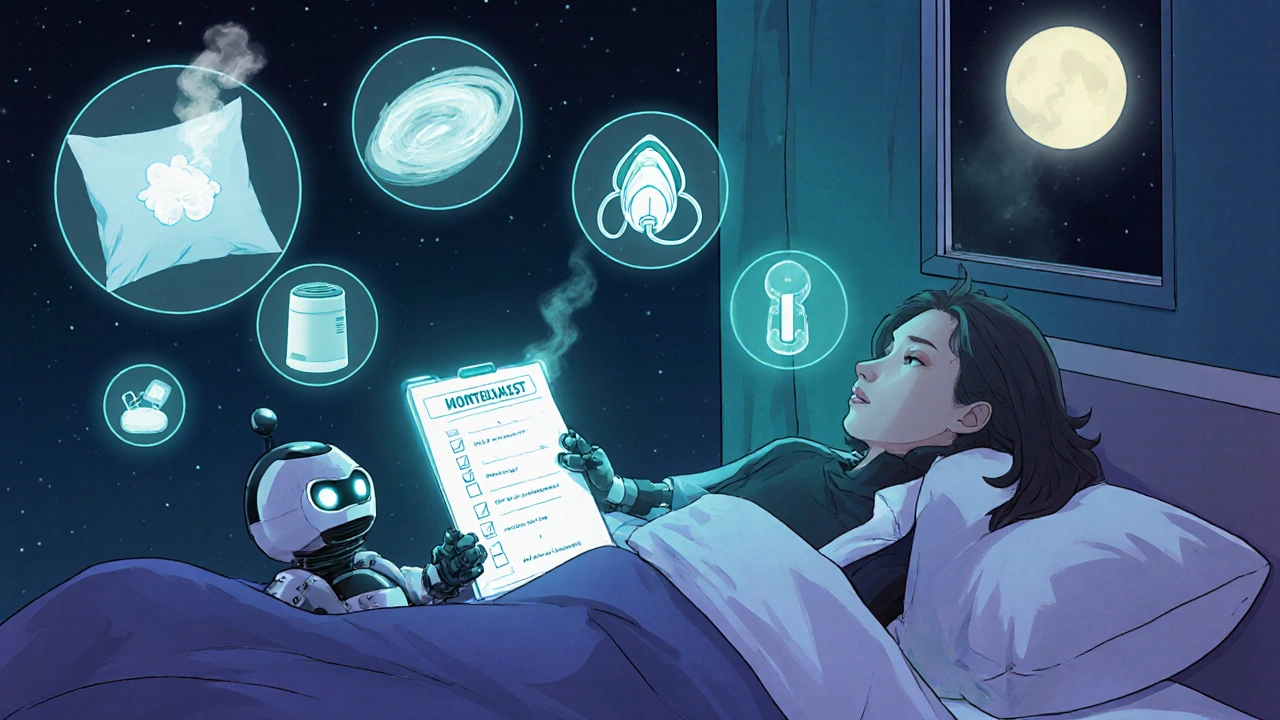Montelukast Trigger Effectiveness Calculator
Select your main environmental triggers to see how Montelukast may help manage your symptoms.
Your Montelukast Benefit Summary
Note: Results based on FDA-approved clinical data. Montelukast works best when combined with allergen avoidance strategies.
Every season, new pollen, dust, or a sudden change in weather can make breathing feel like a chore. If you've ever wondered whether a single pill could buffer those attacks, you're in the right place. Below you'll learn how Montelukast works against the everyday irritants that spark asthma and allergic rhinitis, and what you should keep in mind when you add it to your routine.
Quick Takeaways
- Montelukast is a leukotriene receptor antagonist that blocks chemicals causing airway narrowing.
- It’s most useful for triggers like pollen, dust mites, and air pollution, but less effective for cold‑air or exercise‑induced episodes.
- Typical dose: 10 mg nightly for adults; pediatric doses are weight‑based.
- Common side effects are mild (headache, stomach upset), but watch for mood changes.
- Combine the drug with allergen‑avoidance steps for the best symptom control.
What Is Montelukast?
Montelukast is a prescription tablet that belongs to the class of leukotriene receptor antagonists. It blocks leukotrienes - inflammatory chemicals released after exposure to allergens or irritants - from binding to receptors in the lungs and nasal passages. The drug was first approved by the FDA in 1998 and has since become a staple for managing chronic asthma and seasonal allergies.
How Environmental Triggers Attack Your Airways
Airway inflammation isn’t just a random flare‑up; it follows a predictable pattern tied to what you breathe in. Below are the most common culprits.
- Pollen - Tree, grass, and weed pollen account for roughly 30 % of seasonal asthma exacerbations in temperate climates.
- Dust mites - Their feces contain potent allergens that stay airborne year‑round, especially in humid homes.
- Air pollution - Fine particulate matter (PM2.5) and ozone irritate the bronchial lining, triggering leukotriene release.
- Cold air - Rapid cooling of the airway surface can cause reflex bronchoconstriction, but leukotriene involvement is modest.
- Exercise - In some people, vigorous activity releases leukotrienes, leading to exercise‑induced asthma.

Why Blocking Leukotrienes Matters
Leukotriene receptor antagonist describes any drug that prevents leukotrienes from docking onto their cellular receptors. By doing so, it stops the cascade that causes:
- Bronchial smooth‑muscle contraction (tightening of the airways).
- Increased mucus production.
- Vascular leakage leading to nasal congestion.
This triple‑action is why Montelukast can reduce nighttime asthma symptoms and lessen the need for rescue inhalers during high‑pollen days.
Triggers Montelukast Handles Best - A Quick Comparison
| Trigger | Typical Impact on Airways | Montelukast Benefit | Additional Management Tips |
|---|---|---|---|
| Pollen | Leukotriene‑mediated inflammation, sneezing, wheeze | High - reduces nighttime symptoms by ~40 % | Keep windows closed, use HEPA filters |
| Dust mites | Chronic low‑grade inflammation, nasal congestion | Moderate - improves FEV1 by 5‑10 % | Wash bedding weekly, dehumidify to <30 % RH |
| Air pollution (PM2.5, ozone) | Oxidative stress, leukotriene release | Moderate - blunts peak flow drops on high‑AQI days | Check AQI, limit outdoor activity when >150 |
| Cold air | Reflex bronchoconstriction, minimal leukotriene | Low - no direct benefit | Use a scarf mask, warm inhalation before exercise |
| Exercise | Transient leukotriene surge | Low‑to‑moderate - may reduce post‑exercise wheeze | Warm‑up gradually, consider short‑acting bronchodilator |

Putting Montelukast Into Practice
Even the best medication can fall short if you ignore the environment that sparked the flare‑up. Here’s a practical checklist you can adopt the night before any high‑risk day.
- Take your 10 mg tablet with a glass of water before bedtime.
- Check the local pollen count; if it exceeds 50 grains/m³, keep doors shut.
- Run a HEPA‑rated air purifier in the bedroom for at least 4 hours.
- Wash pillowcases and sheets in hot water (>60 °C) weekly.
- If air quality is poor, wear a N95 mask outdoors and limit exposure to 30 minutes.
- Carry a rescue inhaler (SABA) for sudden symptoms, even if you feel stable.
Safety Profile and What to Watch For
Montelukast is generally well‑tolerated, but a handful of issues have surfaced in post‑marketing studies.
- Common: headache, stomach pain, sore throat.
- Less common: vivid dreams, mild insomnia.
- Rare but serious: mood changes, depression, suicidal thoughts. If you notice any shift, contact your doctor immediately.
- Drug interactions: avoid concurrent use with strong CYP3A4 inhibitors (e.g., ketoconazole) without dose adjustment.
Pregnant or breastfeeding women should discuss risks with a healthcare provider; data suggest no major teratogenic effect, but caution is advised.
Frequently Asked Questions
Can I use Montelukast as a rescue medication?
No. Montelukast works over several hours to prevent inflammation; it does not provide immediate bronchodilation. Keep a short‑acting beta‑agonist inhaler for sudden attacks.
How long does it take to feel the benefits?
Most patients notice a reduction in nighttime coughing within 3‑5 days. Full control of daily symptoms may require 2‑4 weeks.
Is Montelukast safe for children?
Yes, it is approved for kids as young as 6 months for allergic rhinitis and 12 months for asthma, with pediatric dosing based on weight.
What should I do if I miss a dose?
Take the missed tablet as soon as you remember, unless it’s close to the next scheduled dose. In that case, skip the missed one and continue with your regular routine.
Can lifestyle changes replace Montelukast?
For mild seasonal allergies, rigorous avoidance and air filtration may suffice. However, many patients with chronic asthma find the drug essential for keeping night‑time symptoms low.
Understanding the triggers that set off your airway inflammation is the first step. Pairing that knowledge with a daily dose of Montelukast-and a few smart habits-can give you a steadier, easier breathing experience all year round.

Tim Blümel
October 22, 2025 AT 19:27Breathing shouldn't feel like climbing a mountain every spring, and that’s where Montelukast steps in. Think of leukotrienes as tiny firecrackers that explode in your airways whenever pollen or dust decides to crash the party. When those fireworks are blocked, the airway muscles stay relaxed and the mucus doesn’t turn the lungs into a swamp. The drug works its magic overnight, so you wake up with a clearer nose and a quieter chest. Because it targets the inflammatory cascade rather than just opening the tubes, you often need fewer rescue puffs during high‑pollen days. The usual 10 mg tablet at bedtime is simple enough that most people forget they even take medication. Studies show a roughly 40 % reduction in nighttime wheeze for many patients, which translates into better sleep quality. Better sleep, in turn, means better mood and less reliance on caffeine to get through the day. Of course, Montelukast isn’t a silver bullet; cold‑air bronchospasm and acute exercise attacks still need a quick‑acting inhaler. Side effects are generally mild – a occasional headache or an upset stomach – but the rare mood changes deserve a doctor’s eye. If you notice any shift in your emotional baseline, don’t shrug it off; call your clinician right away. Combining the pill with practical steps like HEPA filters, dehumidified bedding, and mask use on bad‑air‑quality days amplifies the benefit. Think of it as a team sport: the medication handles the internal chemistry while you manage the external environment. For kids as young as six months, the dose is weight‑based, so families can protect even the tiniest members of the household. Bottom line: if seasonal allergens keep stealing your breath, Montelukast is a low‑maintenance ally worth discussing with your doctor. 😊
Joanne Ponnappa
October 24, 2025 AT 13:00Keeping windows shut on high pollen days makes a big difference. 😊
Emily Collins
October 25, 2025 AT 16:46It's almost theatrical how the body erupts with sneezes and wheeze when the pollen count spikes-like an unwanted encore after a show you never wanted to see. Montelukast steps onto the stage as a quiet understudy, dampening the drama without stealing the spotlight. While it doesn't cure the cold air shock, it does keep the curtain from falling on your night. The subtle way it smooths out inflammation can feel like a gentle sigh after a shout. Just remember, it’s not a replace‑all hero; keep your inhaler handy for those surprise solos.
Harini Prakash
October 26, 2025 AT 20:33Hey there! 🌼 If you’re juggling pollen and dust, think of Montelukast as the quiet friend that steadies the ship while you focus on the little things-like swapping out pillowcases and running a HEPA filter. The medication works best when you pair it with those simple avoidance tricks, and you’ll notice fewer nighttime coughs. It’s safe for kids too, just check the weight‑based dose with your pediatrician. Stay consistent, and you’ll likely feel a calmer airway without the constant battle.
Rachael Turner
October 28, 2025 AT 00:20Montelukast is a leukotriene blocker that helps reduce airway inflammation caused by common allergens. It is taken once daily, usually at night, and works over several days to calm the lungs. Many users report less nighttime coughing and fewer rescue inhaler puffs. The drug does not replace a quick‑acting bronchodilator for sudden attacks. Side effects are generally mild but keep an eye on mood changes. Combine the pill with practical steps like air filtration and regular cleaning for best results. Talk to your doctor to see if it fits your regimen.
Suryadevan Vasu
October 29, 2025 AT 04:06Montelukast blocks leukotriene receptors, reducing inflammation from pollen and dust. Take 10 mg at bedtime; onset of benefit is 3–5 days. Monitor for headache or mood alterations.
Don Goodman-Wilson
October 30, 2025 AT 07:53Oh great, another "miracle pill" that promises you’ll breathe easy while corporate pharma lines their pockets. 🙄 Sure, it blocks some chemicals, but you still have to buy a $200 air purifier and a mask. If you’re looking for a quick fix, you’ll be disappointed.
Bret Toadabush
October 31, 2025 AT 11:40lol you think it's just about pockets but the real agenda is population control they slip chemicals in the meds to keep us docile dont you see the pattern?
Diane Thurman
November 1, 2025 AT 15:26i think the artcile oversimplifies the risk of mood changes they are more common then u think
Iris Joy
November 2, 2025 AT 19:13For anyone starting Montelukast, set a reminder on your phone so you never miss the bedtime dose. Keep a log of your symptoms for the first two weeks; this data helps your doctor fine‑tune the treatment. Also, maintain regular cleaning of bedding and use a humidifier set around 40‑50% RH to limit dust mite growth. Consistency is key, and most patients notice a clear improvement in nocturnal symptoms within a week.
Sarah Riley
November 3, 2025 AT 23:00Pharmacodynamic modulation of Cys‑LT1 receptors via Montelukast yields a downstream decrement in eosinophilic infiltration, thereby attenuating bronchoconstrictive episodes.
Tammy Sinz
November 5, 2025 AT 02:46When evaluating the efficacy of Montelukast, consider the pharmacokinetic profile-once‑daily dosing achieves steady‑state concentrations that align with circadian peaks of leukotriene release. This synchronization can be particularly advantageous during nocturnal pollen surges. Moreover, integrating environmental control measures, such as a MERV‑13 filtration system, enhances the therapeutic index. Have you tracked your inhaler rescue usage before and after initiating therapy? The data often reveals a 30‑40 % reduction in albuterol puffs, reinforcing the drug’s real‑world impact.
Christa Wilson
November 6, 2025 AT 06:33Stay positive, the right plan can make every breath easier! 🌟
John Connolly
November 7, 2025 AT 10:20In summary, Montelukast offers a valuable adjunct for patients struggling with allergen‑driven asthma and allergic rhinitis. Its once‑daily regimen simplifies adherence, and when combined with practical environmental strategies-such as air filtration, humidity control, and regular linen laundering-patients can achieve meaningful symptom reduction. Clinicians should assess individual risk factors, especially neuropsychiatric warnings, and monitor response over a 4‑week period before making long‑term recommendations. Open communication with the prescribing physician ensures optimal outcomes and safety.